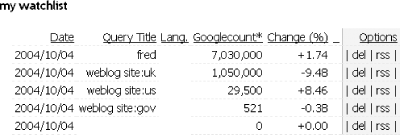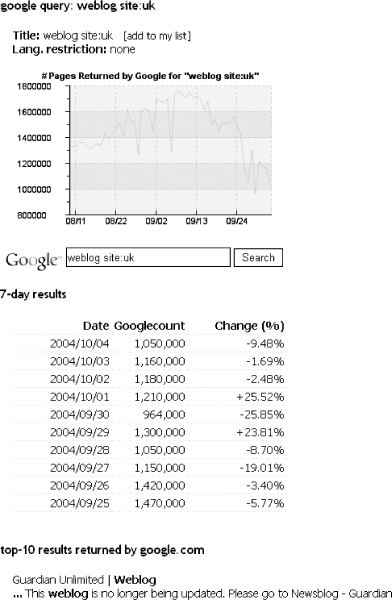|
|
< Day Day Up > |
|
Hack 3. Graph Google Results over Time
Use Google as a trend watcher. As of November 2004, Google's index contains a whopping eight billion pages and growing. And it doesn't just record pages; it's filled with news and events, commentary and discussion, changes and trends. You might think of Google as a mirror that we hold up to the Web that approximates how we define and represent ourselves and our world. It should come as no surprise, then, that people spend an awful lot of time and energy watching Google results in an attempt to spot emerging topics and track trends. If you've been tapped to do this for your company, product, project, or service, G-Metrics (http://g-metrics.com) might be right up your alley. G-Metrics measures the occurrence of a keyword or set of keywords defined by you across time—complete with graphs. Register with G-Metrics (registration requires only your name and email address) for a login key. Once logged in, you can set queries, alter, remove, or review your queries and the results they've captured. Figure 1-10 shows my current watchlist, each query sporting a result count and percentage change over time. Figure 1-10. G-Metrics watchlist results Click a query for a trend graph from the time you added the search, counts for the past seven days, and Google's current top 10 results for that query, as shown in Figure 1-11. Figure 1-11. G-Metrics trend graphing and details for a particular query We also show you how to track result counts over time [Hack #3], but G-Metrics takes this further, allowing you to monitor trends without a lot of legwork; your queries are "set it and forget it." You can even subscribe to an RSS feed of the results of any one of your queries. Sure, you could set up Google Alerts [Hack #59], feed the numbers into a spreadsheet, and do the graphing yourself—but why? |
|
|
< Day Day Up > |
|